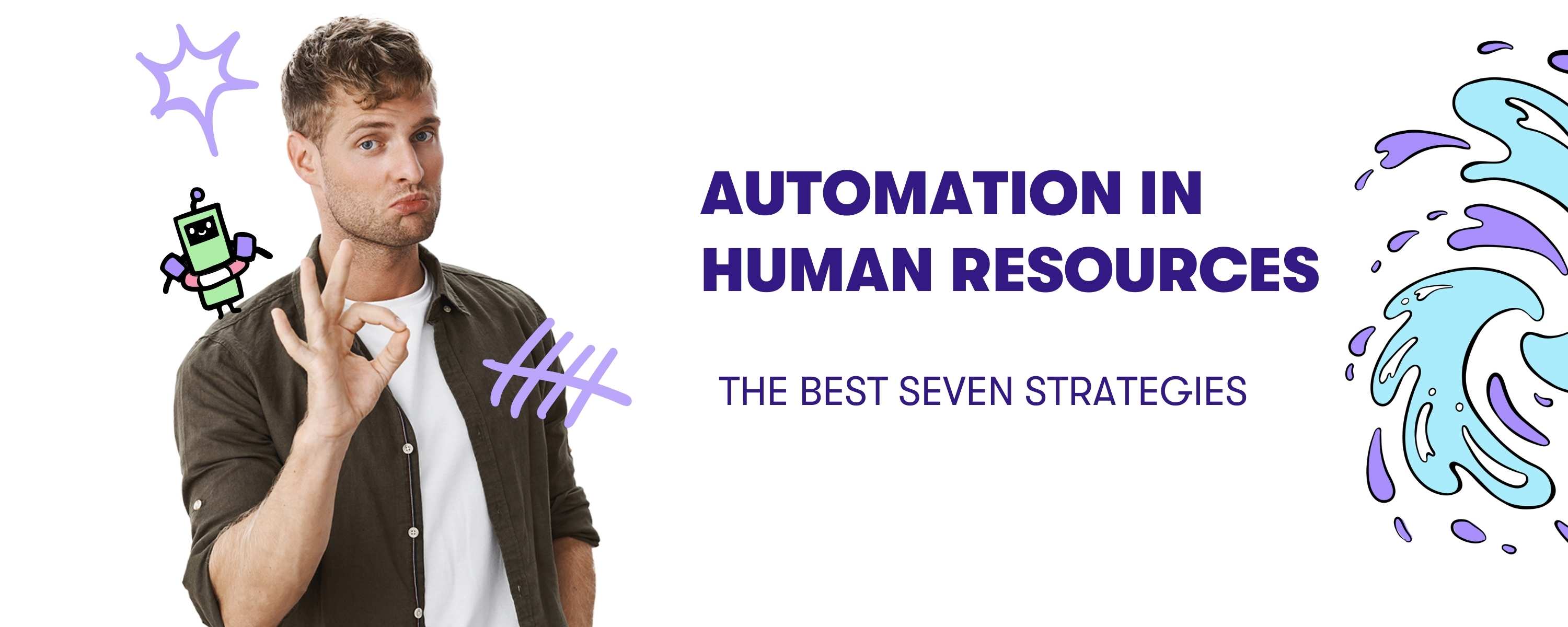Checking applications, sending out invitations for interviews, drawing up contracts or writing salary statements: The list of repetitive processes in the HR department is long. There is often hardly any time left for people in "human resource management". Well-structured automation can change that and make the time-consuming typing of data and filling out of the same forms superfluous.
Strategies for a successful automation in Human Resources
Although there are numerous starting points for Robotic Process Automation (RPA) in automation in Human Resources management, HR is lagging behind other areas, such as finance. In a study by management consultants KPMG, two-thirds of the companies surveyed said they wanted to automate the HR department. However, only 40 percent of companies have a concrete plan to do so. Yet automation in Human Resources can make the department more efficient, avoid errors and save money.

We'll show you seven strategies you can use to start automation in Human Resources:
1. Research
You don't have to completely restructure your company overnight. Start small(er)! Identify annoying tasks that occur every day and automate them - such as standardized mails or forms. This will bring you more than revolutionizing the entire system in the first step. The micro-RPA approach goes even further and says that you should start by automating processes that take a maximum of 5 seconds. You can build on that step by step. Go after what really drives your business forward on a day-to-day basis and eats up employees' time the most. Of course, you should develop a long-term strategy. Research how well your IT is set up or whether there are already approaches for a data warehouse.
2. Create awareness
Once you have set goals and gained an initial overview of existing structures, you need to make specific preparations. Responsible managers and employees can be trained as Automation Strategists. They should also communicate with all employees in advance. People who are specifically involved in the processes to be automated can best assess the automation potential.
3. Identify and prioritize potential
Using input from your team and technologies, such as Process Mining or Business Process Management, you should identify the areas in the value chain that offer the greatest potential for automation before you start. Where is the most time lost? Typical high-volume processes in HR are onboarding, recruiting or learning management. Especially onboarding new employees often involves a lot of paperwork (contracts, access, etc.) and miscommunication. In addition, there is the management of employee data, timesheets, expense reports or vacation requests and, of course, the handling of terminations.
4. Take employees with you
Keyword change management: Automation only works if everyone gets involved. It's no good if someone dictates from on high which processes should be automated. Before you automate, you should make the team aware of the concrete benefits of automation in everyday life. Employee X no longer has to send mails three hours a day, employee Y doesn't sit on the final report for a month. When people realize how RPA and the like can positively change their everyday lives, they support the project. You shouldn't forget top management and the works council and get everyone on board.
5. Choose technologies
To implement automation, you need to choose appropriate technologies and coordinate them with your IT department. Automation in Human Resources tools should be accessible from anywhere, visible at a glance, tamper-proof and quick to implement. It should also be possible to create an individualized HR workflow.
In addition to RPA Tools and Process Mining providers, process automation via the cloud with iPaaS solutions should also be considered as a good addition. With existing interfaces, entire workflow automations are easily possible. Providers for this are, for example, Zapier or Make.
6. Select suitable POC
With a PoC (proof of concept), you should check whether the technologies you want to use really work in practice and fit your requirements. Quickly find processes that can be automated to check and optimize your concept. If you want, you can get help from automation experts.
7. Automate with care
All of the previous points can also be applied to other departments. However, especially in HR it is important not to forget that it is about people. Of course, you should not automate areas that require human proximity, empathy and sensitivity. Talents should not be promoted by bots, but still by people.
Automate FOR the people
You can make a big impact with automation in Human Resources if you approach the changes in a structured way. But it is NOT about automating processes where human proximity is central. It's about putting people back at the center of the business and freeing them from repetitive, tedious tasks. This way, they can once again focus on the processes that drive your business forward.









